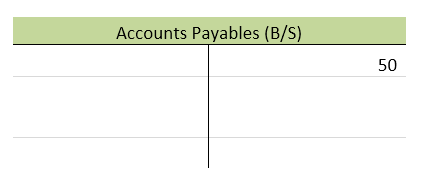
2023-10-6 19:32:6 Author: blogs.sap.com(查看原文) 阅读量:4 收藏
In S4 HANA embedded TM (Transportation Management), Freight and other related charges are accrued through the freight settlement Document (FSD). FSD will create and post a freight service PO (purchase order) and its corresponding service entry sheet confirmation (goods receipt). The freight charges can be accrued via this service entry sheet confirmation and later can be distributed to the product-level margin analysis module using the “cost distribution” posting. Once the actual freight invoice is received, the actual charges can be different than the amount estimated or planned for. In the standard TM module, this variance still stays under the GL account that is used for the service entry sheet. In any organization, the purchasing department would like to split and apply this variance to the products that are part of the original order. This blog will show a simple enhancement to purchase price variance accounting. for these actual freight invoices.
The following figures will show a proposal of the accounting entries accompanying the actual carrier freight Invoice. Let’s say the freight charges have been planned as $100 and upon receiving the actual freight invoice from the carrier, it was found to be $50 higher. Figure 1 shows that the $50 will be charged to a freight clearing GL account if this is the account that the freight settlement document uses. The offset of this posting will be to the Carrier payables (accounts payable sub-ledger GL).

Figure 1: Debit Side posting to Freight Clearing GL during cost distribution

Figure 2 shows the offset for the actual freight invoice variance
The next two figures show the debit (Figure 3) and credit side (Figure 4) of the cost distribution document that will be created while posting the Carrier Invoice. In the standard S4 system, the cost distributions by default are not activated for the “actual” carrier invoices. To solve this gap, a BADI (ERPTMS_IV_AT_POST_BADI) shown in Figure 5, should be activated. Once the enhancement is active in the system, during posting the Carrier AP Invoice, the system will call the cost distribution posting program again and will create a new additional cost distribution document. This document can be normally handled like any other cost distribution document using transaction code WLFLTM2 – Overview Freight Cost Distribution.

Figure 3: Debit Side posting to Expense (P/L) GL during cost distribution

Figure 4: Credit Side posting to Freight Clearing (B/S) GL during cost distribution

Figure 5: BADI to activate the cost distribution on the Freight Invoice
In conclusion, I would like to mention that once this BADI is activated, the incoming Invoice from the carrier will create an additional cost distribution document. While implementing this BADI, one can simply adopt the suggested code supplied by the system. By doing so, the price variance requirement around carrier invoices can be easily mapped to the other robust cost distribution functionality of the TM module. For additional requirements, this BADI or other cost distribution BADIs can be leveraged.
如有侵权请联系:admin#unsafe.sh